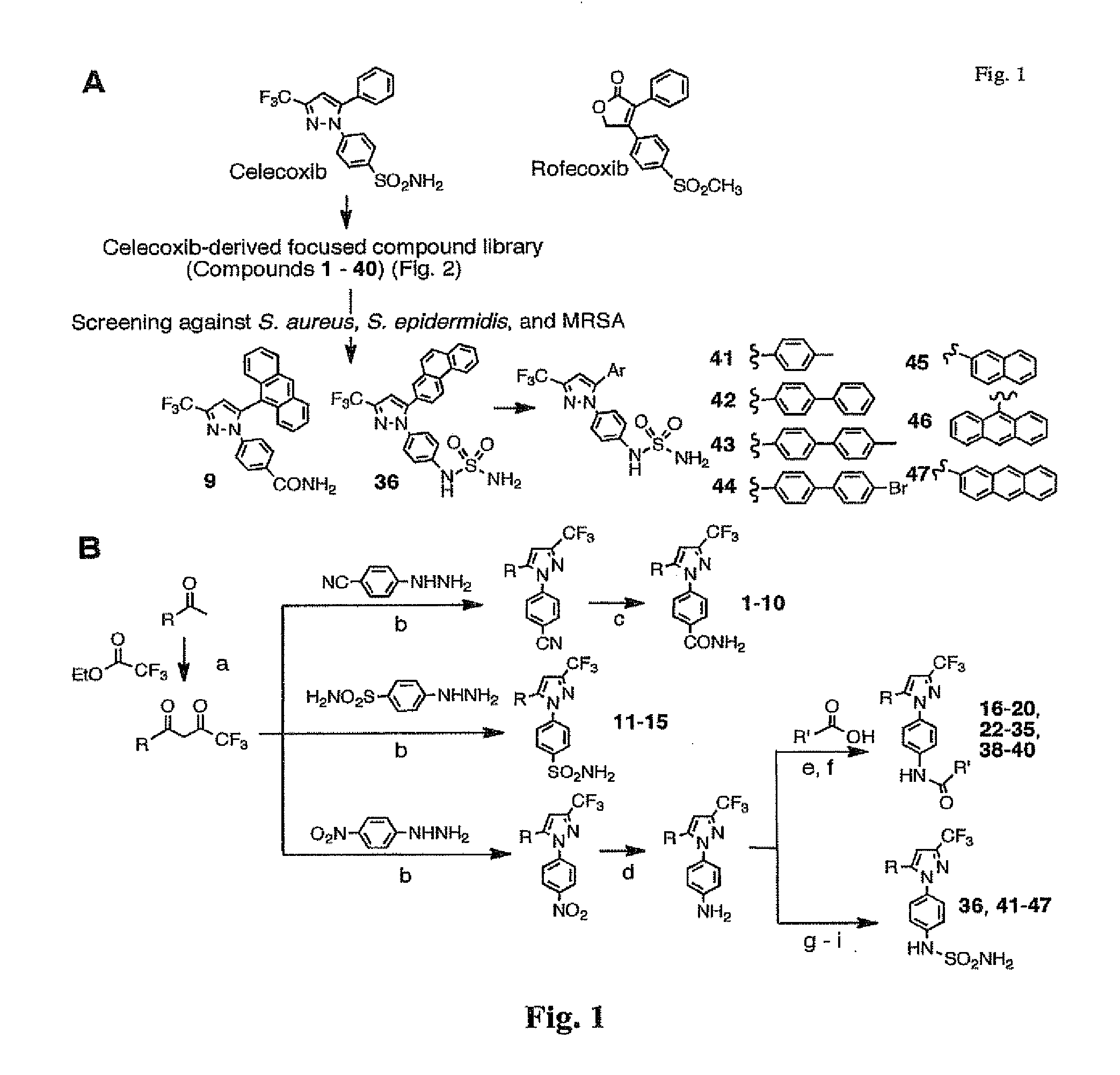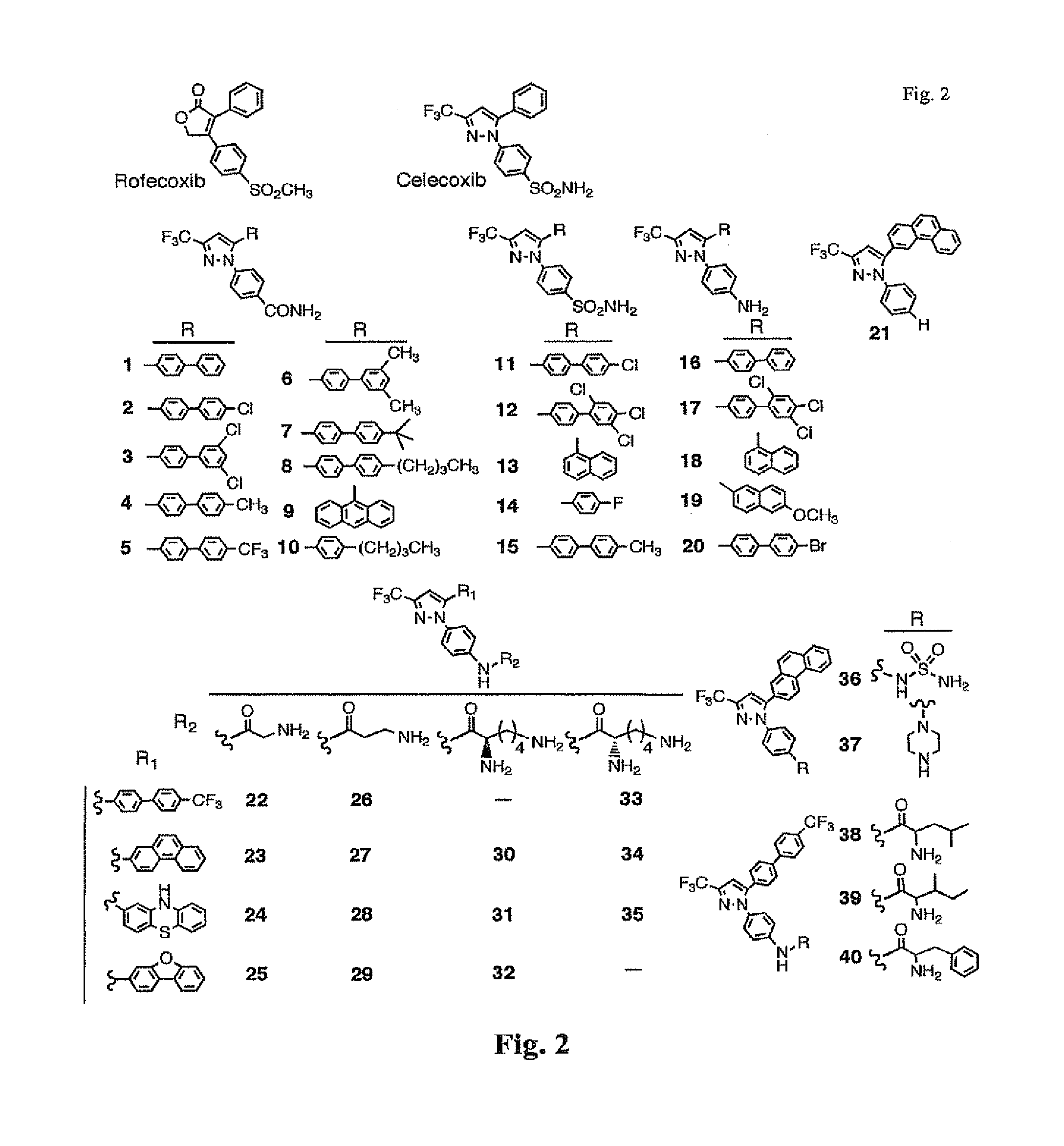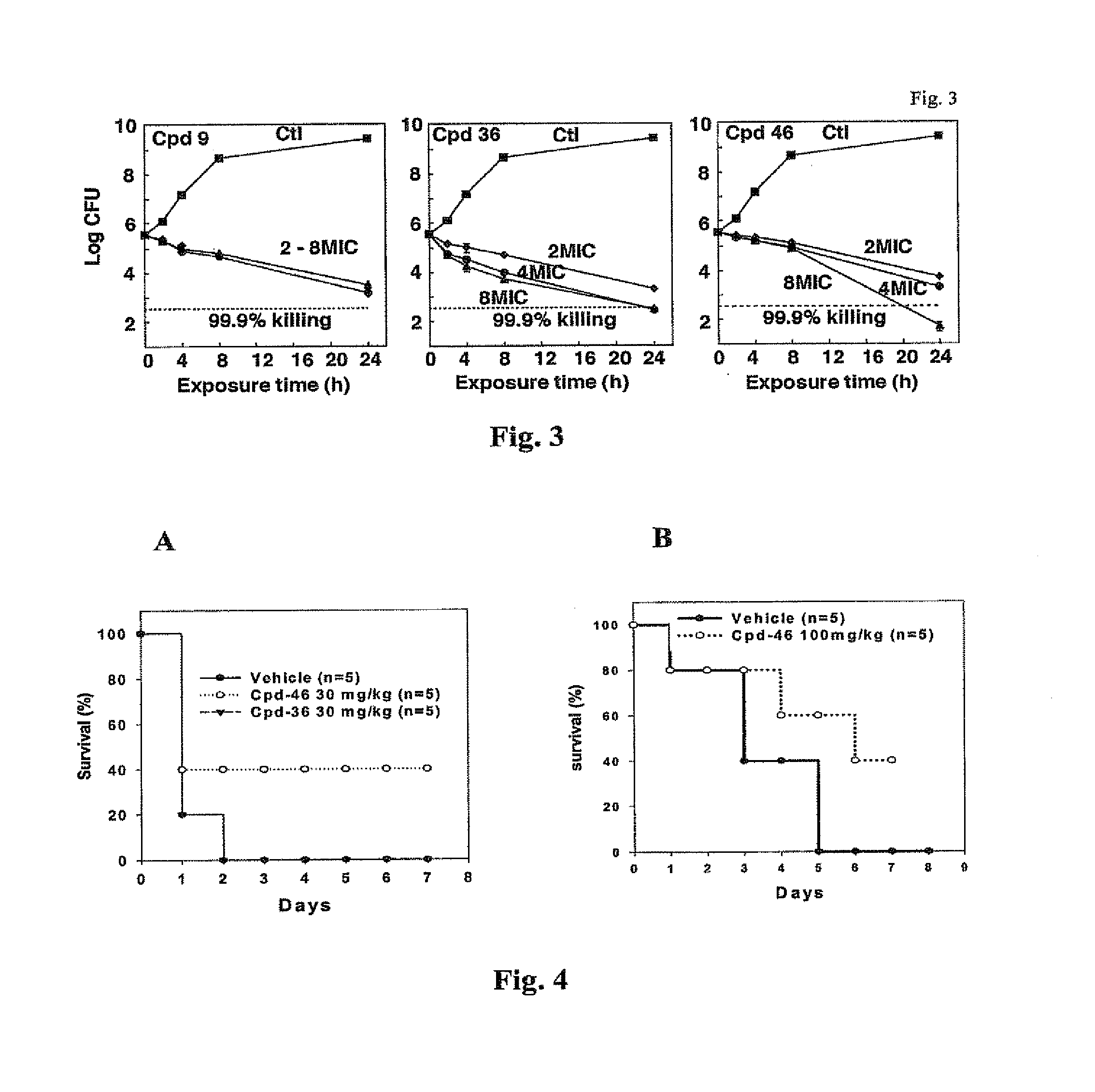Anti-staphylococcal celecoxib derivatives
a technology of anti-staphylococcus and derivatives, which is applied in the direction of antibacterial agents, biocide, heterocyclic compound active ingredients, etc., can solve the problems of clinical challenges to successful therapy and clinical success, and achieve the effects of suppressing growth, significant inhibitory activity, and potent anti-staphylococcus activity
- Summary
- Abstract
- Description
- Claims
- Application Information
AI Technical Summary
Problems solved by technology
Method used
Image
Examples
example 1
General Procedures for the Preparation of Celecoxib Derivatives
[0082]
[0083]As shown in Scheme 1, the ketone (10 mmol) was added slowly to a mixture of NaH (10 mmol) and ethyl trifluoroacetate (11 mmol) in THF. The resulting reaction mixture was stirred at room temperature overnight, concentrated and the residue was dissolved into water. The reaction mixtures was then extracted with ethyl acetate 3× and the combined organic layers were washed with brine and dried with sodium sulfate. The product was purified with column chromatograph (silica gel) afford diketone product.
[0084]To a mixture of NaOEt (10 mmol) and ethyl acetate (12.5 mmol) in THF, the ketone (10 mmol) was added slowly, as shown in Scheme 2. The resulting reaction mixture was stirred at room temperature overnight, concentrated and the residue was dissolved into water. The reaction mixture was then extracted with ethyl acetate 3× and the combined organic layers were washed with brine and dried with sodium sulfate. The pro...
example 2
Identification of Novel Anti-Staphylococcus Agents
[0092]Previously, the inventors obtained evidence that the cyclooxygenase-2 (COX-2) inhibitor celecoxib and its derivatives exhibited unique antimicrobial activities against various pathogenic bacteria in vitro. Chiu et al., Antimicrob Agents Chemother 53, 5236-44 (2009); Chiu et al., J Biomed Sci 16, 110 (2009); Chiu et al., Antimicrob Agents Chemother 53, 2998-3002 (2009).
[0093]As described herein, the inventors have demonstrated that celecoxib directly suppresses the growth of S. aureus, S. epidermidis and MRSA, while the more potent COX-2 inhibitor rofecoxib was ineffective. As celecoxib has been shown to suppress cancer cell proliferation, in part, by competing ATP binding of certain signaling kinases, such as phosphoinositide-dependent kinase-1 (PDK-1) and cyclin-dependent kinases (CDKs), and endoplasmic reticulum Ca2+-ATPases, the inventors hypothesized that celecoxib mediates the bacterial killing by blocking ATP-dependent en...
PUM
| Property | Measurement | Unit |
|---|---|---|
| minimum inhibitory concentrations | aaaaa | aaaaa |
| minimum inhibitory concentrations | aaaaa | aaaaa |
| concentration | aaaaa | aaaaa |
Abstract
Description
Claims
Application Information
 Login to view more
Login to view more - R&D Engineer
- R&D Manager
- IP Professional
- Industry Leading Data Capabilities
- Powerful AI technology
- Patent DNA Extraction
Browse by: Latest US Patents, China's latest patents, Technical Efficacy Thesaurus, Application Domain, Technology Topic.
© 2024 PatSnap. All rights reserved.Legal|Privacy policy|Modern Slavery Act Transparency Statement|Sitemap



